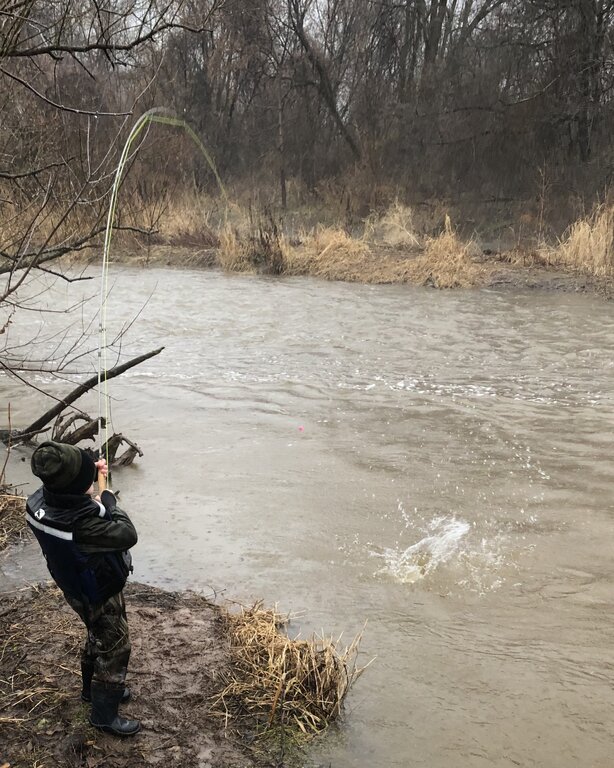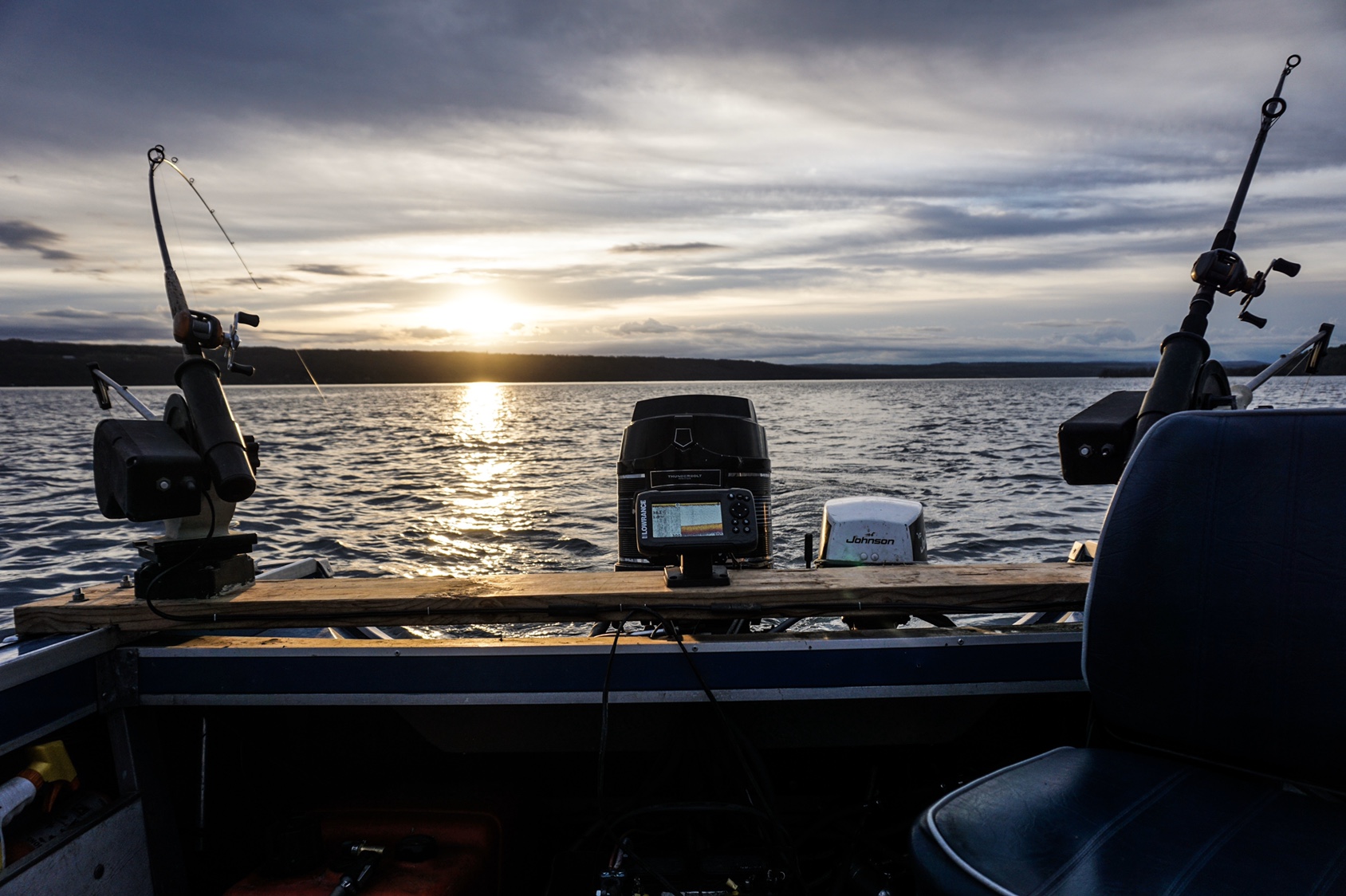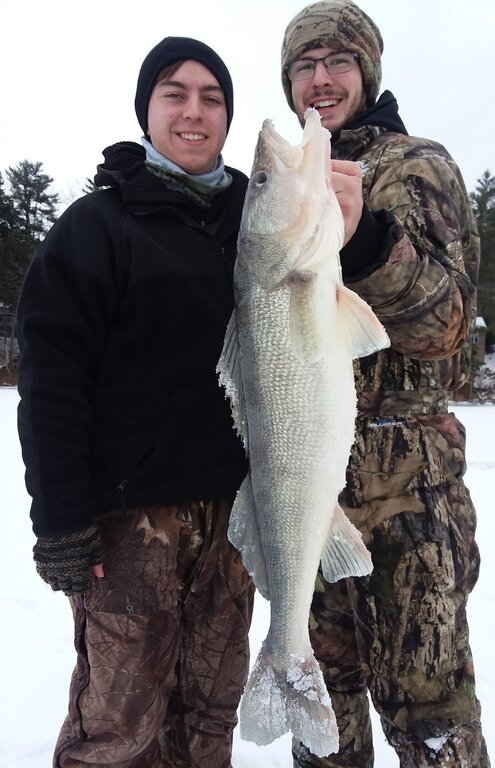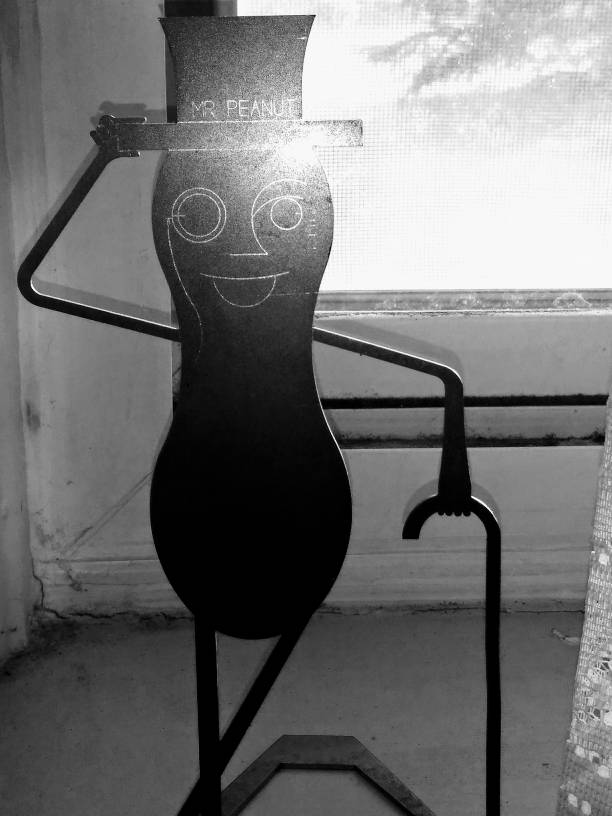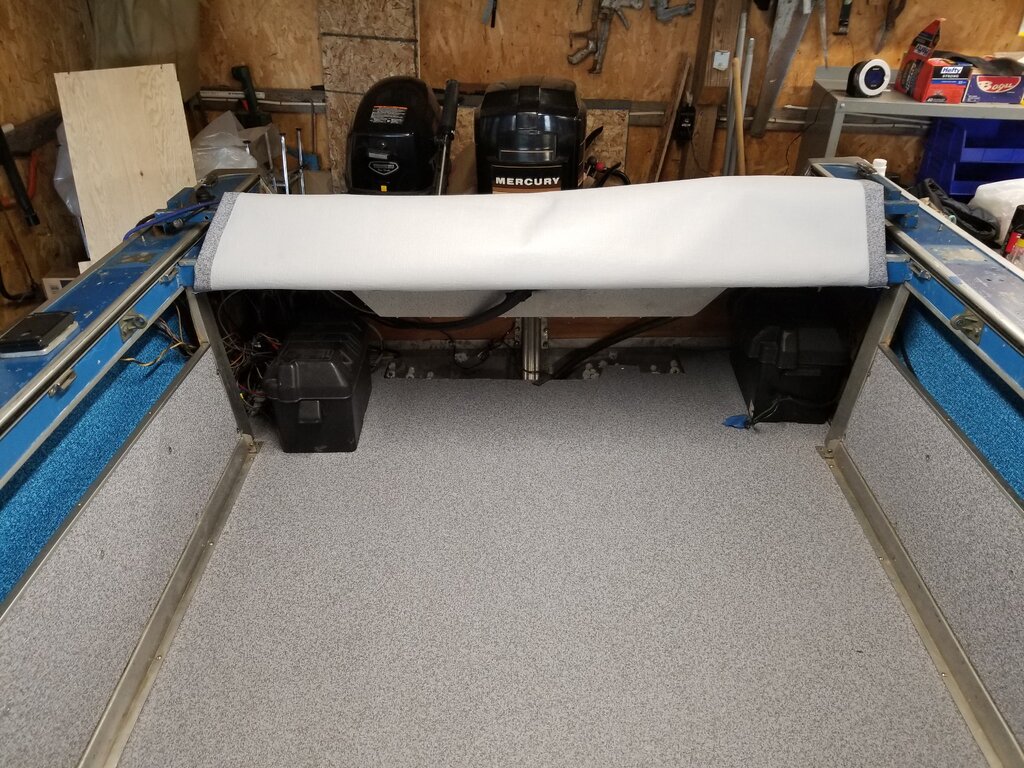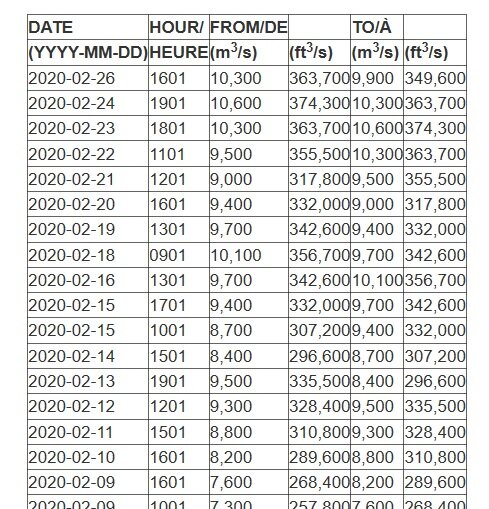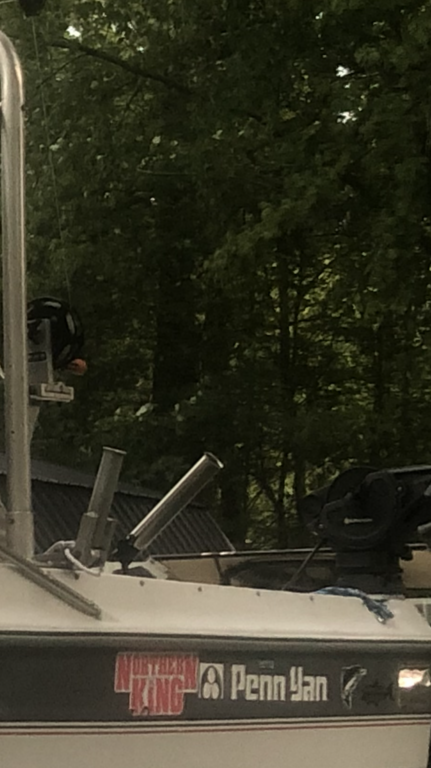-
Posts
13,873 -
Joined
-
Last visited
Everything posted by Sk8man
-
-
- 55 replies
-
- 10
-

-
A whole lot of things here that are valid considerations but probably the most important is how the particular weapon feels in your hands as is important in selecting handguns. The other issues mentioned can be whittled down to your purpose but using an uncomfortable firearm affects everything from satisfaction to accuracy and should be a main consideration regardless of caliber or model selection or ballistics.
-
-
Brian I consider you to be a lake Ontario Laker expert and I know the Lake O fishery is different than that of the Finger Lakes etc. but after over 50 years of catching them in both places and salmon since the mid seventies I'm pretty familiar with both species as well, but I am no formally trained biologist either so my opinion probably should be taken with that in mind, but in all those years I have never seen anything other than than alewives (than one instance of what looked like a partially digested cisco) in the Pacific salmon stomach contents. On the other hand I have seen just about everything in the stomach contents of lakers including quite a few surprises such as a rubber worm, a jig, Zebra mussel shells, crayfish. and freshwater clams and also when rainbow smelt were around a lot of them were in the contents along with stonecats (freshwater sculpin). The sculpin ( in the Fingers historically and Lake O as well) are a favorite food source for lakers in the Spring and again in the Fall when they inhabit the shallows. Gobies a more recent addition to the food chain are very similar in appearance so in the earlier years mentioned they may have been probably one of the two varieties of sculpin available I would imagine. In the summer months alewives would naturally become the prime target for most if not all species of adult salmon and trout out in the depths. Not many fishermen fish the winter months in boats for a lot of understandable reasons but the same applies to deep water fishing for lakers at least on the Fingers as the smelt are virtually gone in most places. What I was referencing in my previous post is that at least there is some break in the chowing of alewives with respect to the lakers whereas with the salmon it is virtually constant. Although I have often found multiple alewives in the stomach contents of lakers but I've frequently seen multiple baitfish in the mouths of salmon and browns and in one case 9 sawbellies in the mouth and throat while it still inhaled my spoon suggesting they have very voracious appetites and may be more efficient feeders of alewives. Lakers are often bottom feeders and therefore come into contact with other baitfish species and sources of food while the pelagics are pretty much roamers and feed in the stratified water nearly exclusively where the alewives are most prominent; especially during the warmer months. I guess that is what I was basing that opinion on. I do have a better familiarity with the Finger Lakes dynamics than Lake O with respect to this issue though and that may be more significant than I took into account too.
-
-
I very much enjoyed your post Vince and you make a number of well reasoned points worth mulling over. The comment regarding the impact of the cormorants is particularly important to the discussion. I am totally amazed that this bird species is protected by the Feds despite the damage they cause to not just the fisheries where they abound but the environment as well. After frequenting Cape Cod for roughly 40 years I have seen firsthand the impact the populations of cormorants have made there with hundreds of them sitting on the electric and telephone wires everywhere near the freshwater ponds and kettle lakes decimating the baitfish (herring etc.) as well as small fish of any species found there (perch, bass etc.) and they have no predators (including humans). They are constantly polluting these areas by fecal droppings in the water and along the shorelines altering and negatively affecting the ecosystem (in addition to the geese we have here which have been doing so for years now as well but at least there is seasonal hunting to control numbers). In addition to Lake Ontario they have moved into the Finger Lakes region as well and continually grow in numbers competing with the seagulls for available resources and continue to pollute the areas where found, and as they reproduce without and any natural or human intervention the problem continues to get worse and other existing species don't seem to be able to "out-compete" them either. We probably can't do much about the effects of Mother Nature but implementing some control over the cormorants and exerting "pressure" where possible should be of high priority as it may be more of a negative force on our fisheries than fully realized. I am a fan of birds in general but these things need to be controlled in some fashion. Just as a side note regarding some comments made in other postings on here for some time now regarding the comparison of salmon and lake trout impact on the alewife population and the long life of lakers vs. short life of Pacific salmon and its impact on the alewife population. Something to keep in mind is that the (much maligned) lake trout have a diverse diet where salmon nearly exclusively feed on alewives right through the size range of the bait and themselves. The extreme growth rate during the short few years the salmon (and perhaps browns as well) are alive speaks volumes about this relationship, and the slower growth rate of lakers over extended time probably to some degree suggests they are eating things with less nutritional value than alewives. I love the salmon as much as anyone and they are a hell of a lot more fun to catch usually but I think also that blaming the lakers for decimating the baitfish (if it is accurate which is questionable in my mind) may not be totally fair.
-
-
If Allen can get his pass accuracy where it is supposed to be, hold onto the ball more carefully,get rid of the ball faster, and the Bills defense lives up to potential and put Brady off his game They stand a chance. Brady is not the same QB as he used to be (despite the naysayers)and is starting to show his age. He is afraid of getting hit, can't run or scramble for crap and stays in that protected pocket all the time so if the defense can rush him to throw off his passing game, overrun his "protectors" and they protect against Gilmore the Bills may do some harm.....whole lot of "ifs" but possible.If the Pats had Drew Brees the Bills would probably be screwed.
-
-
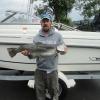
DEC ANNOUNCES INFORMATIONAL MEETINGS ON FRESHWATER FISH VIRU
Sk8man replied to KING ME's topic in Open Lake Discussion
I believe this question was posed some years back and the answer was only commercially prepared ones can be used and you have to have the packaging for proof. -
I wasn't suggesting that it is possible to measure the number of decibels all the time I was merely giving an idea of what is considered to be damaging to hearing (with the inference that a gunshot next to the ear probably exceeds that level). It isn't just "ringing in the ears" that is of concern it is the often gradual permanent loss of hearing. My dad was a turret gunner on a B-24 Liberator bomber during world was II and his hearing was drastically affected by the noise and it plagued him for the rest of his life so I take it rather seriously and I always wear protection while shooting.
-
I can relate.... F-4D's running up their engines and taking off right next to you doesn't help either
-
It is certainly worth a shot Earl. I imagine most of the guys running the Aftcos will be saltwater guys using things other than copper. Always fun to experiment anyway. I think you may need to make sure that in setting up the release it is fastened to the boat such that there is no give or stretch involved and that you are able to achieve the proper tension adjustment such that it holds the copper properly (a lot of drag especially with longer ones) and yet will still release for fish to minimize "snap offs". You'll probably have to play around a bit to get it right. I wouldn't think there would be any copper damage as you would be running your backing line through it with the copper already fully deployed.
-
It is also advisable to check the number of decibels being suppressed (higher the better). I believe that noise at about 105 decibels is damaging to hearing
-
Just an FYI in case you (or others) aren't able to get what you want from them. The Blacks releases can be used say from outriggers and you can totally adjust them for your purpose by just not looping the line around the release arm just allow it to run through it . You can let out or withdraw as much line as you wish with that method and still have the fish release the line from the release unless it is a very small one perhaps. I used my outriggers that way for over 40 years without any problems. Setting the tension properly is the only crritical part of it.
-
They are OK for flatlining (top lining) UV rays raise hell with the plastic on them if you do much summer fishing and they can disintegrate. The other thing is that they can bang around on your boat when under speed if not secured. They also cost $26 so you can buy 5 outrigger model Black Releases for about that without the potential problems. The rollers themselves are good quality and Aftco is known for their rollers (e.g. roller tips for rods etc.)
-

New members from Johnson City, NY
Sk8man replied to tonymoran23@msn.com's topic in Introduce Yourself
It is a little different each year but usually the salmon especially locate at the extreme west end of the lake taking advantage of the rich nutrients emanating from the Niagara River and bar area out from it pulling in baitfish and various predators along with them., and the fact that the area starts to warm more quickly. The fish gradually move eastward throughout the season with spawners ending up in the Fall near the Salmon River. sometimes it is quite "quiet" in the eastern basin during the Spring. Often June is considered a "transition" month meaning that kings especially may be difficult to either find or get to bite when found. Browns may b e caught early in the year all along the south shore and the area around Fairhaven to Sodus Point and beyond can be especially productive This info is admittedly just a "thumbnail sketch" as conditions are different each year (e.g. water temps, time baitfish enter the shallows etc.) so just a general "feel". I don't usually fish the two extremes of the lake so others may wish to offer more specifics. of things -

New members from Johnson City, NY
Sk8man replied to tonymoran23@msn.com's topic in Introduce Yourself
Welcome! You may wish to head west in the Spring and then later on fish where you mentioned -
-
-
-

Winter Salmon Fishing in Vancouver, BC with Bon Chovy Fishing Charters
Sk8man replied to bonchovy's topic in Fishing Videos
Nice job on the camera work etc. It was interesting to see that the one salmon had a lamprey mark on it....no escape from them anywhere I guess -
-
Oxbow. With everything said taken into consideration you may be able to use the Anglers Pals but if so use safety lines to your rods and make sure you tighten down the bases real good and check them frequently to make sure that they don't loosen up from the combination of wave action and the weight of the torque on the rods. You may have to turn the holder in the base such that the slot that fits on the ball is not in a downward position and it may not give you exactly the rod position you wish but may be safer


